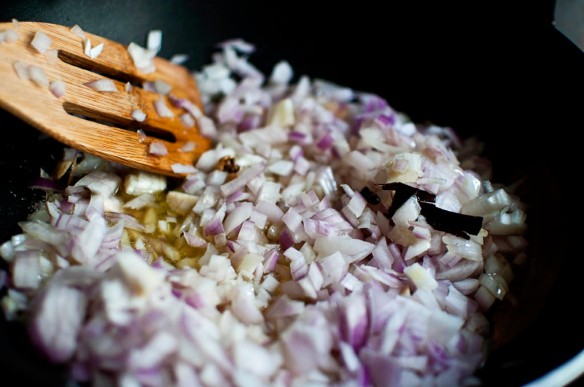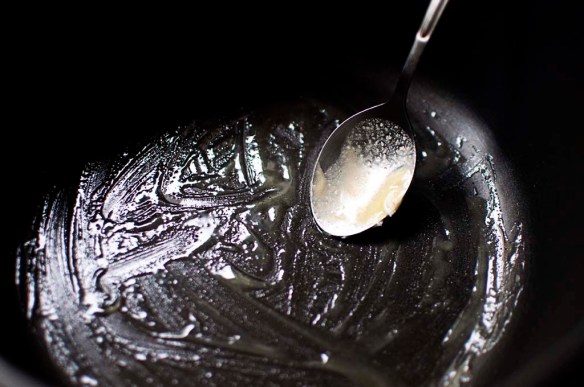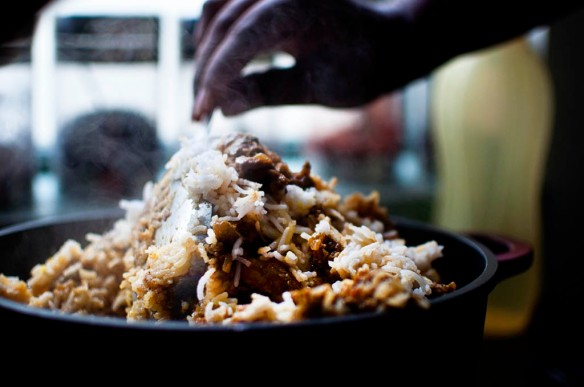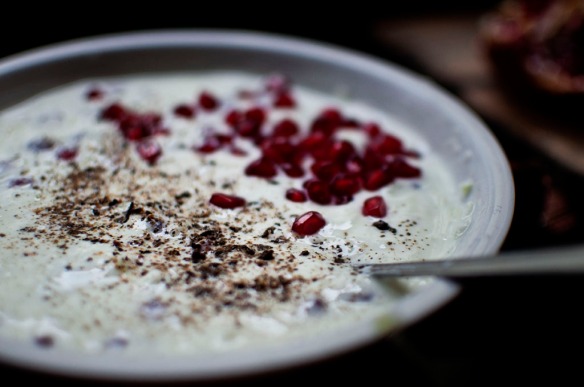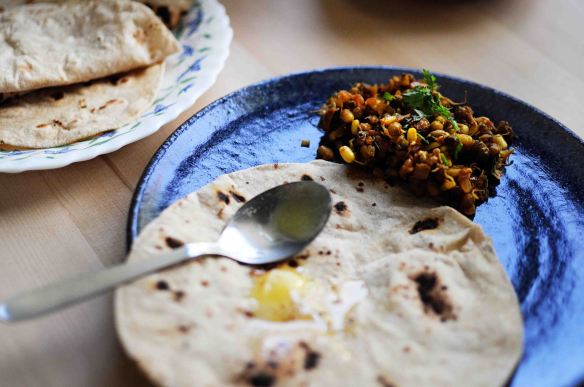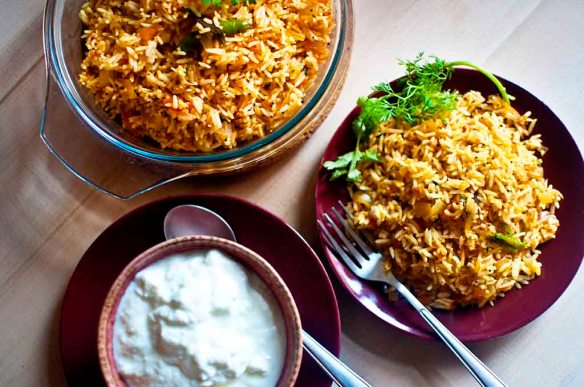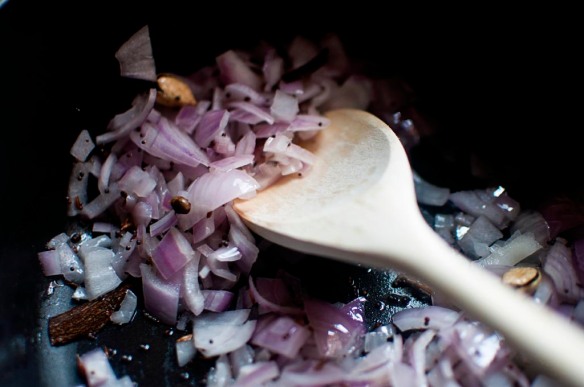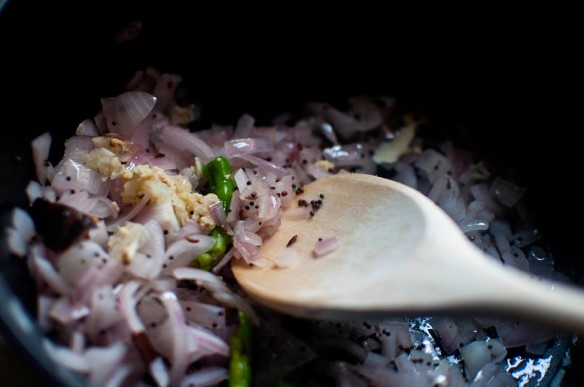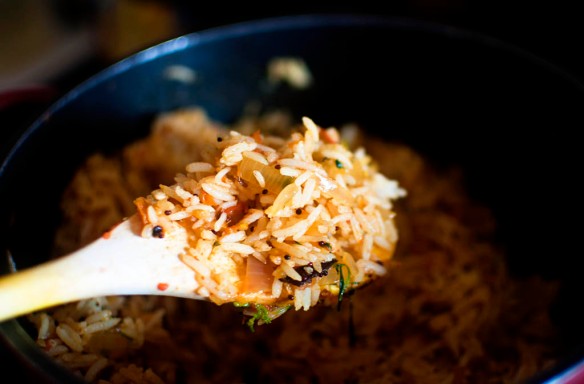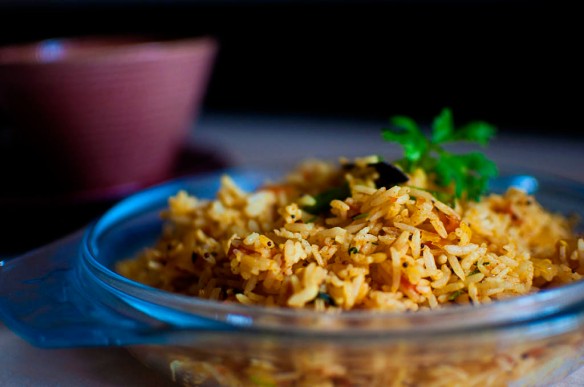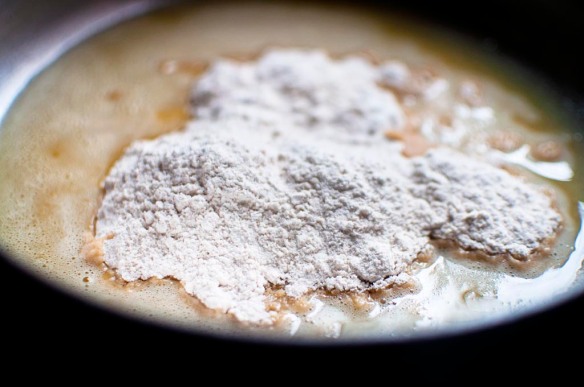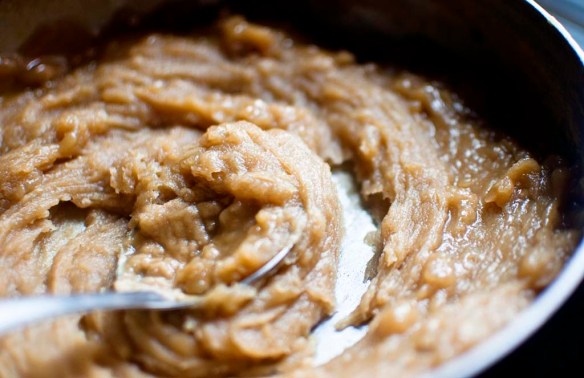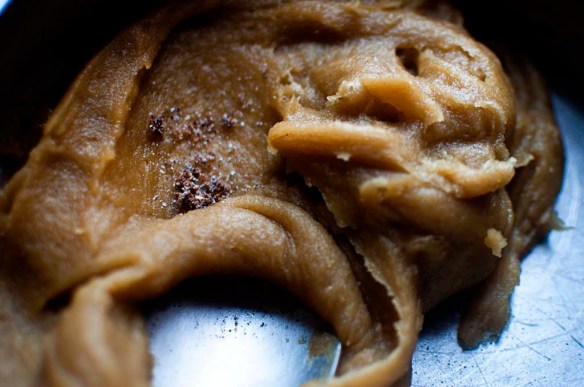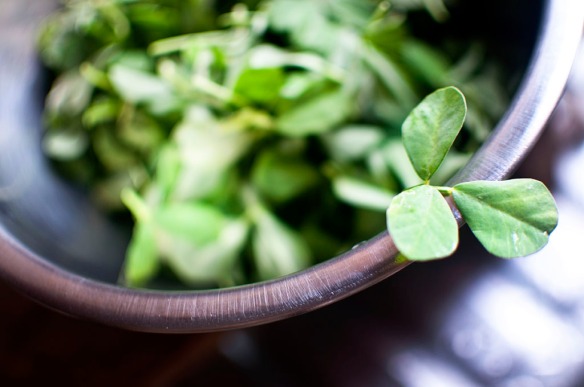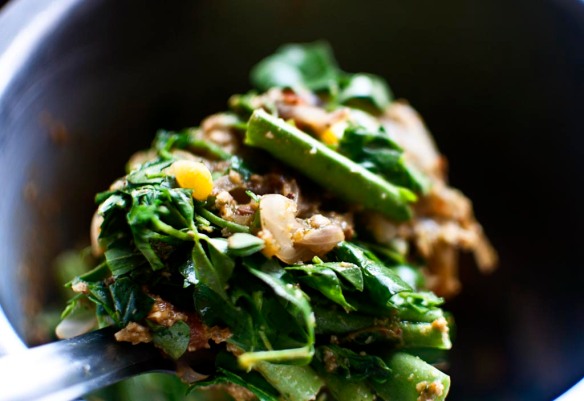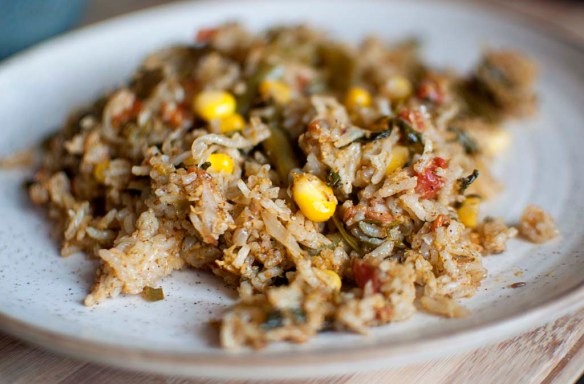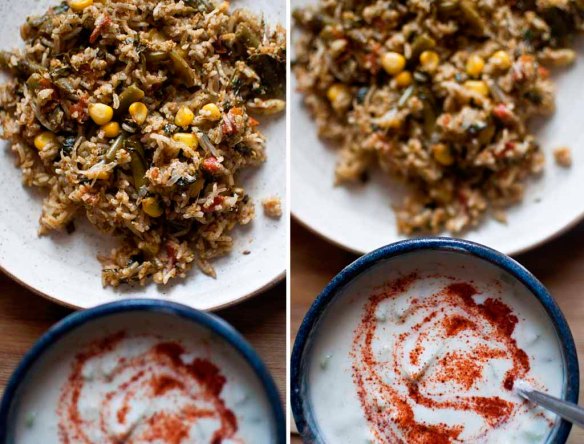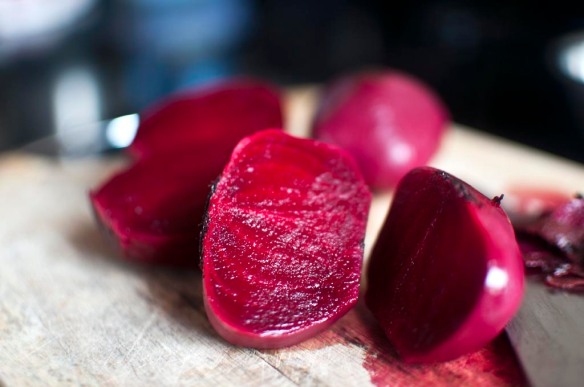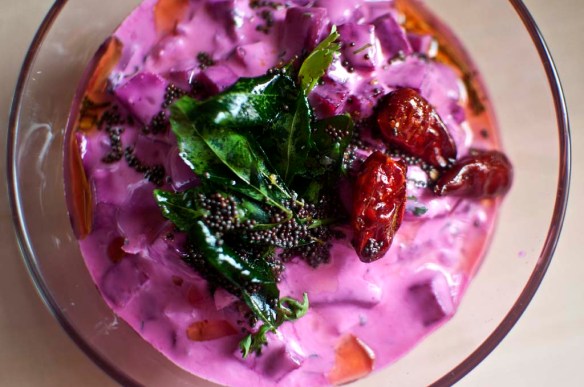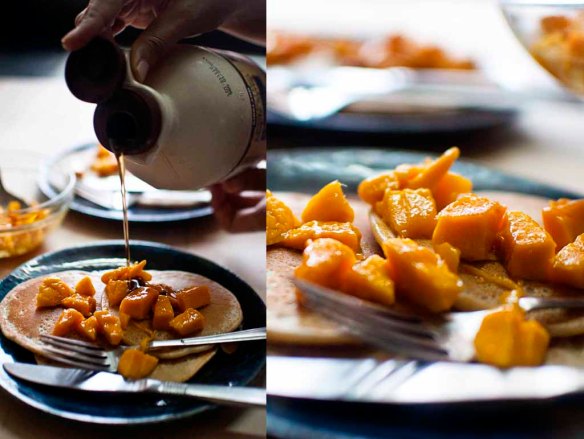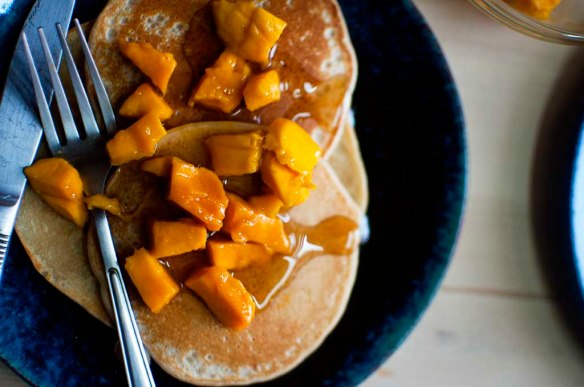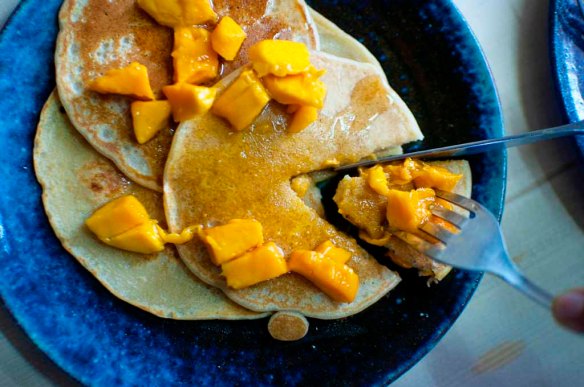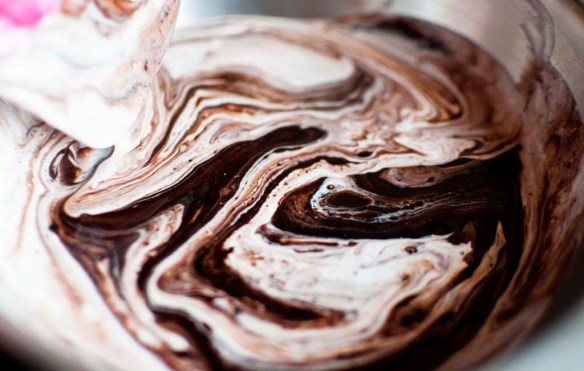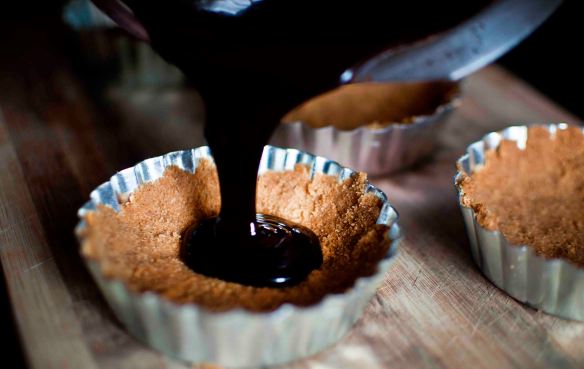Because I dared to put veggies in payasam (kheer)
Some days you have a flash of nostalgia from so far back in your childhood that you wonder if your memory is playing tricks with you. Did that really happen, or are you imagining it all? But the details are so vivid, the little nuances so stark, it leaves little doubt. Some days, the present creates an almost exact re-enactment of what once was, and memories come rushing back. Little snapshots suspended in a time long gone draw closer, trickling in to your mind again, till you can almost see them as they once were.
I’m still basking in the new-found joy of having wonderful neighbours and living in a lane full of homes stacked close. I step out every morning to water the few pots in my balcony, and invariably wave to someone across the street. My next door neighbour is almost always on her balcony at that time of morning and never hesitates to call my name and say hi with a big, cheery smile. It makes for a great start to my day. One morning last week, I stumbled out, going about the same cycle of motions, eyes half closed with a bucket of water in my hands, when I heard my name. In an instant, I was transported back almost 25 years ago, to the when I was still in my nappies and we (my parents and I) lived in a tiny one bedroom outhouse at the back of a bigger home somewhere in Serpentine Road, Bangalore, and I practically started and ended every day in my neighbours home.
It was a time where neighbours were family, our support system and an extension of our own home and lives. I lived in their home, ate there, showered there, napped there and I’m positive a large part of my foodie streak also developed there. Meera Aunty, who was on several instances mistaken to be my mother (given the frequency with which I was spotted in her arms, or in her home, or being fed by her) made the tangiest tastiest saaru I have had to date, the best kumbalakai sambar (with peanuts!), the yummiest gojju that would make my salivary glands do a backflip!
They say you’re too young to remember much from that long ago in your own life, but I have some strong food memories of those first 2-3 years. I can see it all like it happened just yesterday. Running across at mealtimes, in my underpants and a vest, Bata chappals thrown on. Placing my bum on a cold steel stool by her dining table, eating out of big steel plates with compartments. Relishing the grainy texture of puliyogare, spooning fragrant ghee all over my food and mixing rice and sambar with my fingers, picking out the pieces of pumpkin so I could save the best for the last, sometimes eating just palya out of a katori until the rest of the lunch was prepared. I’m pretty sure my love for veggies started there, and has held me in good stead ever since.
Perhaps the strongest memory of them all is waking up in my home to the aroma of ghee roasting up sooji, or besan. That distinct warm toastiness of grain and ghee, mixed with a hint of cardamom or toasting nuts was enough to tell me that Meera Aunty was making something sweet, and I’d rush out into our backyard and call out to her. In seconds her smiling face would poke out of the balcony next door, to confirm that she was indeed making “goddi” (my childspeak for something sweet). I didn’t need to ever ask if I could go over. Her doors were always open to me, the boundaries blurry and food on her table always in excess, anticipating my unannounced arrival. So its no wonder that on the day last week when my neighbour called out to me, and memories of 25 years ago flashed through my mind, I wanted to replicate that same warmth that homemade sweets brought to my life back then.
I didn’t need to ever ask if I could go over. Her doors were always open to me, the boundaries blurry and food on her table always in excess, anticipating my unannounced arrival. So its no wonder that on the day last week when my neighbour called out to me, and memories of 25 years ago flashed through my mind, I wanted to replicate that same warmth that homemade sweets brought to my life back then.
One of the loveliest payasams Meera Aunty made was a carrot payasam. An intriguing pinky-orange colour, it was best enjoyed warm, with a dollop of ghee to make if glide down your throat. Dotted with ghee-roasted nuts, sometimes a raisin here and there, and a slight trace of badam essence, I could almost feel the flavours falling into place in my mind.
It’s funny how food can do that. Bring people, events and memories back to your mind. Help you recreate recipes in your kitchen, no matter that you were in your chaddies when said event occurred, and there was no way that you could fathom the concept of cooking back then.
So here is my take on the carrot kheer. Of course I had to add a twist to it, so I threw in some beets too. The recipe is probably not similar to the one she uses, but the inspiration comes from the warmth of her kitchen and all the memories she helped stack up. It definitely recreated that same feeling for me! What I used
What I used
1 cup chopped carrots and beetroots2-3 cups milk
1/4 cup jaggery (I used the dark, Goan kind, but you can substitute it with sugar too)
1 tablespoon badams (almonds)
1 tablespoon cashew nuts
A pinch of saffron
A pinch of cardamom powder
1 teaspoon ghee
How I made it
I chopped the veggies up first.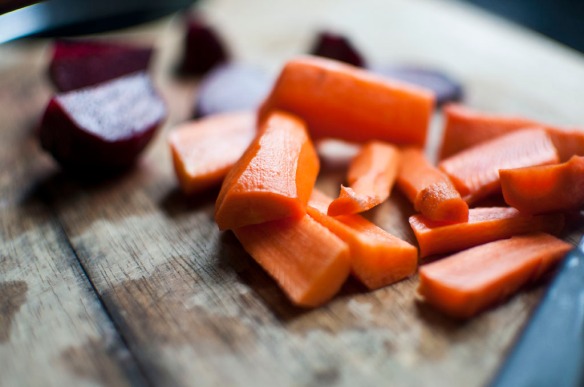 Then I measured out 1 1/2 cups of milk into my pressure cooker.
Then I measured out 1 1/2 cups of milk into my pressure cooker. I dunked the veggies into the milk and pressure cooked it for a couple of whistles. This only took 2-3 whistles in my case because I was using a small quantity of veggies.
I dunked the veggies into the milk and pressure cooked it for a couple of whistles. This only took 2-3 whistles in my case because I was using a small quantity of veggies.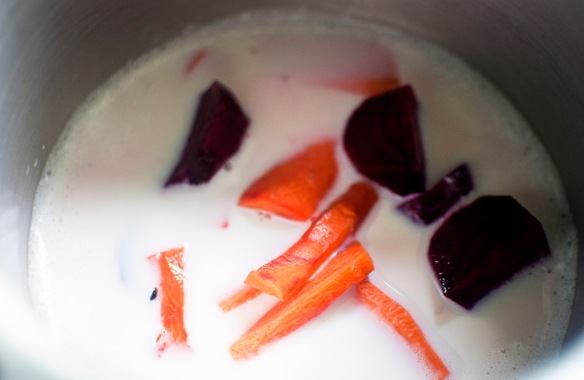 I warmed (not boiled) the remaining milk and took it off the flame. I measured out the jaggery and dissolved it into the milk.
I warmed (not boiled) the remaining milk and took it off the flame. I measured out the jaggery and dissolved it into the milk. In a few tablespoons of warm milk, I soaked the saffron and cardamom powder.
In a few tablespoons of warm milk, I soaked the saffron and cardamom powder.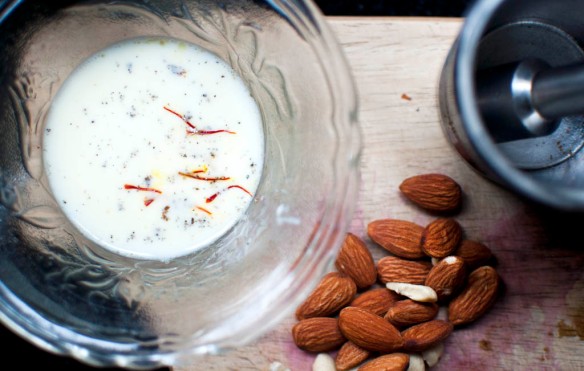 When the pressure from the cooker had released, I poured the contents into my mixer, added in the half the nuts and pulsed it to a paste.
When the pressure from the cooker had released, I poured the contents into my mixer, added in the half the nuts and pulsed it to a paste.
 I tipped the paste into the remainder of the warm milk and stirred it till it was smooth and well incorporated. The nuts gives the payasam some grain and thickness so it is important to make sure it dissolves.
I tipped the paste into the remainder of the warm milk and stirred it till it was smooth and well incorporated. The nuts gives the payasam some grain and thickness so it is important to make sure it dissolves. Next, I added in the saffron milk.
Next, I added in the saffron milk. In a small frying pan, I added the teaspoon of ghee and fried up the leftover nuts till they were golden and tipped them into the kheer and mixed it all up.
In a small frying pan, I added the teaspoon of ghee and fried up the leftover nuts till they were golden and tipped them into the kheer and mixed it all up.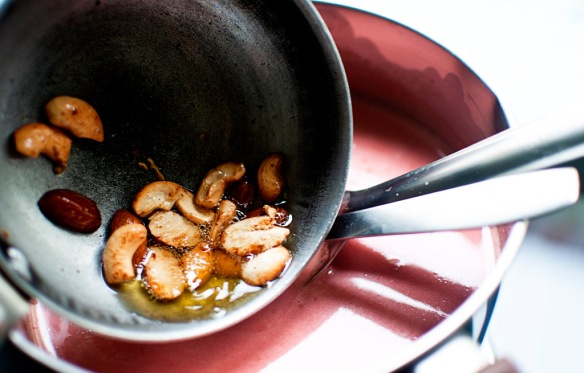
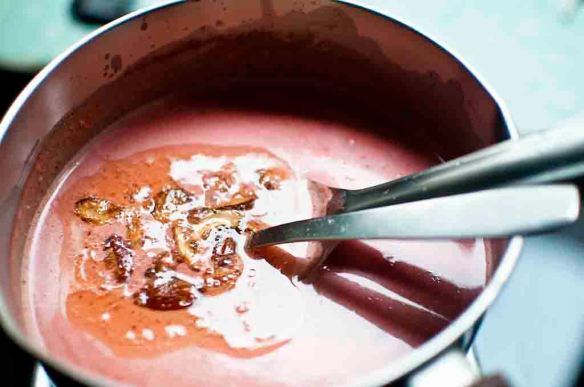 Done!
Done! I like to have this payasam warm and I would suggest you try it that way too. It has the natural sweetness of carrots and beets, bolstered by the jaggery and laced with the saffron, nuts, cardamom and ghee.
I like to have this payasam warm and I would suggest you try it that way too. It has the natural sweetness of carrots and beets, bolstered by the jaggery and laced with the saffron, nuts, cardamom and ghee.
The husband, who isn’t the biggest fan of veggies and kheer separately, walloped a couple of bowls full of this.
 The flavours felt familiar, but apart from the fond childhood memories it evoked, I couldn’t quite put a finger on what exactly it reminded me of, until the husband piped up, “It’s like a liquidised, deconstructed version of gajar ka halwa!”
The flavours felt familiar, but apart from the fond childhood memories it evoked, I couldn’t quite put a finger on what exactly it reminded me of, until the husband piped up, “It’s like a liquidised, deconstructed version of gajar ka halwa!” I think that was a pretty apt description!
I think that was a pretty apt description!



